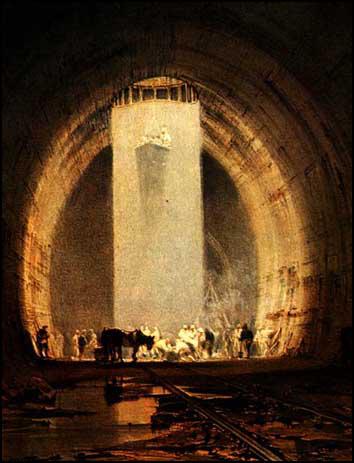Kilsby Tunnel
In 1833 Robert Stephenson was appointed chief engineer of the London & Birmingham line. Many people living on the proposed route were bitterly opposed to the railway. This included a group of landowners in Northampton who forced Stephenson to make the line pass some distance from their town.
As a result of this change, Robert Stephenson now had to build a tunnel through Kilsby Ridge. Over 1,250 navvies moved into the area and set up a camp of tents and mud huts. Soon after starting on the project the roof of the tunnel collapsed and a deluge of water burst in. The men working on this part of the tunnel were only saved from drowning, according to Samuel Smiles, "by means of a raft on which they were towed by one of the engineers swimming with the rope in his mouth to the lower end of the shaft".

Stephenson discovered that the problem was caused by a layer of quicksand under a 40 feet thick bed of clay. Several miles wide, the waterlogged sand was about 120 feet below the surface. For a time Stephenson considered abandoning the tunnel but after talking to his father, George Stephenson, it was decided to try and pump out the water from the top by powerful engines erected over each shaft. These engines possessed an aggregate power of 160 horses and had to be used non-stop for 8 months. On average, these engines pumped out 2,000 gallons of water per minutes.
The 2,400 yard long tunnel took 1,250 men nearly two years to build. The original estimated cost of the tunnel was £99,000 but by the time it was completed, the London & Birmingham Company had spent nearly £300,0000 on the Kilsby Tunnel.
